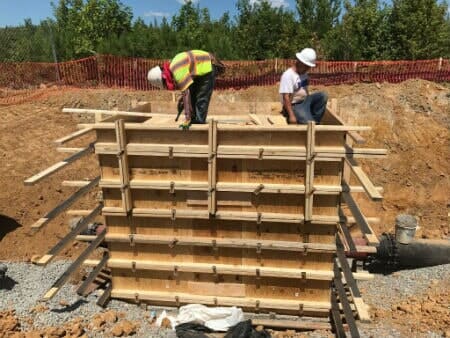
You need to be familiar with how to mount roof tiles. To ensure proper installation, you should follow the steps outlined below: introducing lower rows of roof sheet around the perimeter. These rows must be cut in the width required for mounting. The first row will measure 50 mm wider than its eave and the second will measure 150 mm. The next step is to mount rows at 150-mm intervals of linear tiles modules.
Explanatory section and mounting detail of tiles for roof
The following section provides information and details about mounting tiles for roofing. They are used in designing a roof. This section describes how to install the modular modules. The second part of this section describes the installation and spacing of the modules.

Slate
When choosing slate tiles for a roof, there are several factors to consider. First, there is the thickness of the slate. This can be as little as 3/16 inches or as thick as an inch. This can make a huge difference in cost and time. It is also important to consider the shape, size, and texture of the pieces. Most property owners use between two and four colors in their roofs.
Clay
Clay tiles for roofing are one of most durable and resilient materials. They can also withstand damage from extreme weather conditions. Because of their low water content, clay tiles are virtually indestructible to the elements. Clay tiles have a lifespan of on average 150 year. Clay roofing has another advantage: it blocks harmful UV rays from sunlight. The most reflective clay tile type is unglazed redterra cotta. A typical asphalt roof, however, only 5 to 15% reflect the sun's rays.
Concrete
When installed correctly, concrete tiles for roofs require little maintenance. They are long-lasting and can withstand high winds, fire, rot and mold. They are also heat-reflective, which means they can reduce energy costs.
Polymer-tiled roofs
Because they look exactly like slate, polymer-tiled roofs make a great investment. The tiles can be used for decades, are resistant to fire and impact and last for many years. They won't trap moisture or attract insects. They're a popular choice for homeowners. Insurance companies often give discounts to homeowners who have them installed.

Ceramic tiles
Ceramic tiles are a great choice for your roof. They are water- and impact-resistant and require little maintenance. They are also recyclable and environmentally friendly. Whether your roof is a pitched one or a flat one, ceramic tiles will protect your property against the elements.
FAQ
How much does it cost to apply for building permission?
It depends on your state and the complexity. It will also depend on whether permission is being sought to build or expand your house. You should expect to wait several months before everything is approved.
What is a Standard Contract Form (SCF)?
A template is used to create contracts. These templates include all of the basic elements of a contract including the date/time, place and parties.
Clients can alter standard contract forms to meet their needs. For example, certain companies may offer their standard contracts forms.
These forms may not be right for everyone. They can often be a time-saver and a great way to save money.
One of these standard forms could be an option.
Who pays for this service?
The SCA identifies who is responsible for paying the service. If the service provider is not paid in full, it may have grounds to claim compensation through the courts.
Is a Service Contract a Warranty?
Service contracts are not warranties. A service contract is an agreement between two people to exchange goods or services. In this instance, the customer agrees that he will cover the costs of replacement or repair if the product doesn't perform as expected. This type of contract is also known by the term maintenance contract.
Statistics
- Don't take their anger personally, they are mad about the situation 99% of the time. (activatemylicense.com)
- (3) The contracting officer may provide for a contract price adjustment based solely on a percentage rate determined by the contracting officer using a published economic indicator incorporated into the solicitation and resulting contract. (acquisition.gov)
- (1) Ascertain the extent to that offers are based on the payment of overtime and shift premiums; and (2) Negotiate contract prices or estimated costs without these premiums or obtain the requirement from other sources. (acquisition.gov)
- Reasonable late fees go up to 25% per year on unpaid sums. (lawdepot.com)
- Depending on the client's trustworthiness and financial stability, a deposit is usually 10 to 50% of the total contract amount. (lawdepot.com)
External Links
How To
What should a contract of service include?
A Service Agreement (SA) is essential to any business relationship. It will outline what you expect and how it will be achieved. The SA also specifies when and where you expect each party to fulfill its contractual obligations.
The key elements of a successful SA are:
-
The scope of both the work and the services required.
-
Information about payment terms, including the start and end dates for delivery of goods/services.
-
A project cost agreement.
-
Any additional charges, like VAT, etc.
-
If there are any other issues that need to be addressed.
-
Who will take responsibility if there is an error in the job?
-
How to resolve disputes
-
What happens when one party breaks the contract?
-
What happens if there is a dispute
-
When does the contract take effect?
-
What happens if a party doesn't perform.
-
What length of time will you be required to pay invoices
-
Who pays for travel expenses?
-
Where the money is coming from.
-
What happens if the client changes his mind about the project?
-
What happens to the supplier if they don't show up.
-
Who has permission to view the site during construction
-
What happens if the client cancels the project?
-
What happens if the product is faulty.
-
What happens when the manufacturer refuses supply?
-
What happens if the equipment breaks down.
-
What happens if the project is delayed?
-
What happens if the work isn’t completed within the stipulated time?
-
What happens if the quality of the finished project falls below expectations?
-
What happens to the cost overruns?
-
What happens if you don't receive your materials on time?
-
What happens if the material arrives damaged.
-
What happens if products do not meet the standards?
-
What happens if the job gets cancelled before it is completed?
-
What happens if the company goes bankrupt?